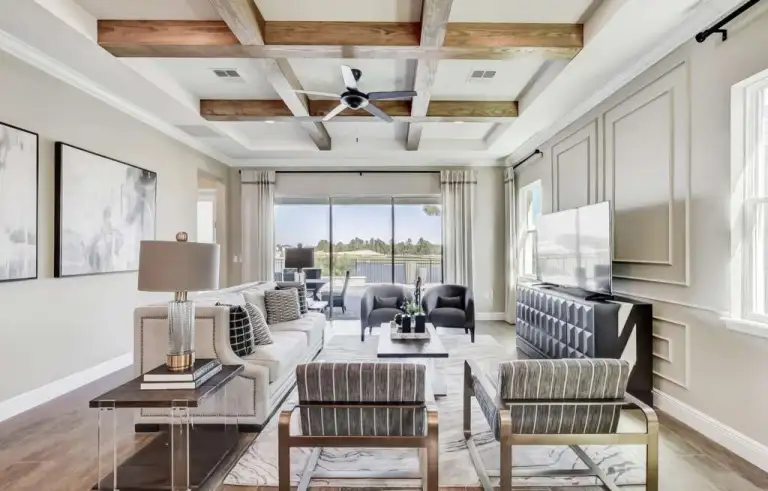
Great rooms have become an increasingly popular feature in modern home design, offering a versatile and inviting space for various activities. Originating from architectural trends of the late 20th century, these expansive living areas have evolved to become focal points of contemporary homes, fostering social interaction and functional flexibility.
Introduction to Great Rooms
Great rooms, sometimes referred to as grand rooms or family rooms, represent a concept in residential architecture characterized by open, multifunctional spaces that integrate living, dining, and often kitchen areas. Emerging in response to changing lifestyles and preferences, the great room concept reimagines traditional compartmentalized layouts in favor of fluid, interconnected living spaces conducive to modern living.
Design Elements of a Great Room
Open Floor Plan
At the heart of a great room lies an open floor plan, which eliminates barriers between distinct living areas, creating a sense of connectivity and flow. This design approach promotes spatial fluidity, allowing occupants to move seamlessly between zones while fostering social interaction and facilitating entertaining.
Multifunctional Spaces
Great rooms are designed to serve multiple purposes, accommodating various activities and lifestyle preferences within a single, cohesive environment. From hosting gatherings and family meals to relaxing or working, these multifunctional spaces offer versatility and adaptability to changing needs and preferences.
Architectural Features
Architectural features such as soaring ceilings, expansive windows, and strategically placed focal points enhance the visual appeal and functionality of great rooms. Natural light, panoramic views, and seamless transitions between indoor and outdoor spaces contribute to the sense of openness and spaciousness, creating an inviting and immersive environment.
Benefits of Having a Great Room
Enhanced Social Interaction
The open layout of great rooms fosters social interaction and connectivity, allowing occupants to engage in conversations and activities across different areas without feeling isolated or confined. Whether hosting guests or spending quality time with family, the communal atmosphere of a great room promotes a sense of togetherness and conviviality.
Versatility and Adaptability
Great rooms offer unparalleled versatility, accommodating a wide range of activities and lifestyle preferences within a single, integrated space. From formal gatherings to casual lounging or impromptu playdates, the flexibility of great room design enables seamless transitions between different functions, maximizing the utility and enjoyment of the space.
Aesthetic Appeal
Beyond their functional benefits, great rooms contribute to the overall aesthetic appeal and ambiance of a home, serving as focal points of architectural and interior design. Thoughtfully curated furnishings, finishes, and décor elements enhance the visual impact of the space, creating an inviting and harmonious environment that reflects the homeowner’s style and personality.
Tips for Creating an Inviting Great Room
Furniture Arrangement
Strategic furniture arrangement is key to optimizing the functionality and flow of a great room. Consider the scale and proportion of furnishings in relation to the size of the space, allowing for comfortable circulation and clear sightlines. Group seating arrangements around focal points such as a fireplace or media center to anchor the space and promote conversation.
Lighting Design
Effective lighting design plays a crucial role in enhancing the ambiance and functionality of a great room. Incorporate a mix of ambient, task, and accent lighting to create layers of illumination that cater to different activities and moods. Utilize natural light sources such as windows and skylights to maximize daylight exposure and create a bright, airy atmosphere.
Personalization and Décor
Infuse personality and warmth into your great room through thoughtful décor and personal touches that reflect your tastes and interests. Choose artwork, textiles, and accessories that complement the overall design scheme while adding character and visual interest. Incorporate elements of nature such as plants or natural materials to bring a sense of vitality and connection to the outdoors.
Conclusion
In conclusion, great rooms represent a versatile and inviting concept in residential architecture, offering open, multifunctional spaces that promote social interaction, versatility, and aesthetic appeal. By incorporating key design elements and following practical tips for creating an inviting environment, homeowners can transform their great rooms into vibrant hubs of activity and relaxation that enhance the overall enjoyment and functionality of their homes.




